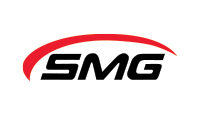We manage energy project development, environmental permitting, remediation and compliance, insustrial hygiene, health & safety, auditing, environmental management, government relations. We solve your problems in all of these areas. We move quickly and dig deeply to reach your goals. We work wherever you are.
How can SMG help you?
SMG POV
EPA’s Proposed Methane Updates Estimated to Cost New Landfills $471,000 Annually
WRITTEN BY
William Shane, P.E.TAGGED
According to EPA, methane is a “potent greenhouse gas” that accounts for nearly 9 percent of all greenhouse gas emissions in the United States. Since 1990, methane pollution in the United States has decreased by 11 percent, even as activities that can produce methane have increased. However, methane pollution is projected to increase to over 620 million tons of carbon dioxide pollution in 2030. Therefore, the Strategy to Reduce Methane Emissions was released in March 2014 as a key element of the President’s Climate Action Plan. The strategy commits to new steps to cut methane emissions. Key steps include “voluntary” actions and “common-sense” standards for the following industries:
- Landfills
- Coal Mines
- Agriculture
- Oil and Gas
According to the press release, landfills are the third-largest source of human-related methane in the country, accounting for 18 percent of methane emissions in 2012. Regulatory and voluntary programs, including the EPA’s Landfill Methane Outreach Program, have helped reduce emissions from landfills by 30 percent from 1990 to 2012. However, the administration believes that there is more room for improvement. As part of the Administration’s methane strategy, the EPA is proposing updates to its air standards for new municipal solid waste (MSW) landfills. Under the proposal, landfills would capture two-thirds of their methane and air toxics emissions by 2023 – 13 percent more than required under current rules. EPA estimates the net nationwide annual costs of complying with the additional requirements in the proposed rule would be $471,000 in 2023. Therefore, proposed landfill operations should be aware of potential new methane requirements and plan accordingly.
FEATURED PROJECT
PROBLEM
A local company engaged in manufacturing imported a small amount of a chemical substance defined under TSCA. Faced with a potential EPA enforcement action with penalties assessed for noncompliance under TSCA of up to $32,500 per day per violation, the company called SMG for help.
SMG'S APPROACH
SMG analyzed the company’s current TSCA procedures and assisted the company in developing a proactive, cost-effective compliance procedure. SMG also facilitated a training program to educate employees about TSCA.
MG worked with the company to develop mechanisms that assured adherence with the policies that were being implemented for compliance. Procedures to promptly correct any potential violations and prevent future violations were also put into place.
RESULTS
SMG was able to show that the company complied with the relevant TSCA regulations and was improving their TSCA policies and procedures to assure that future issues were less likely to occur. The company was not subjected to the proposed penalties and now has mechanisms in place to maintain TSCA compliance.
